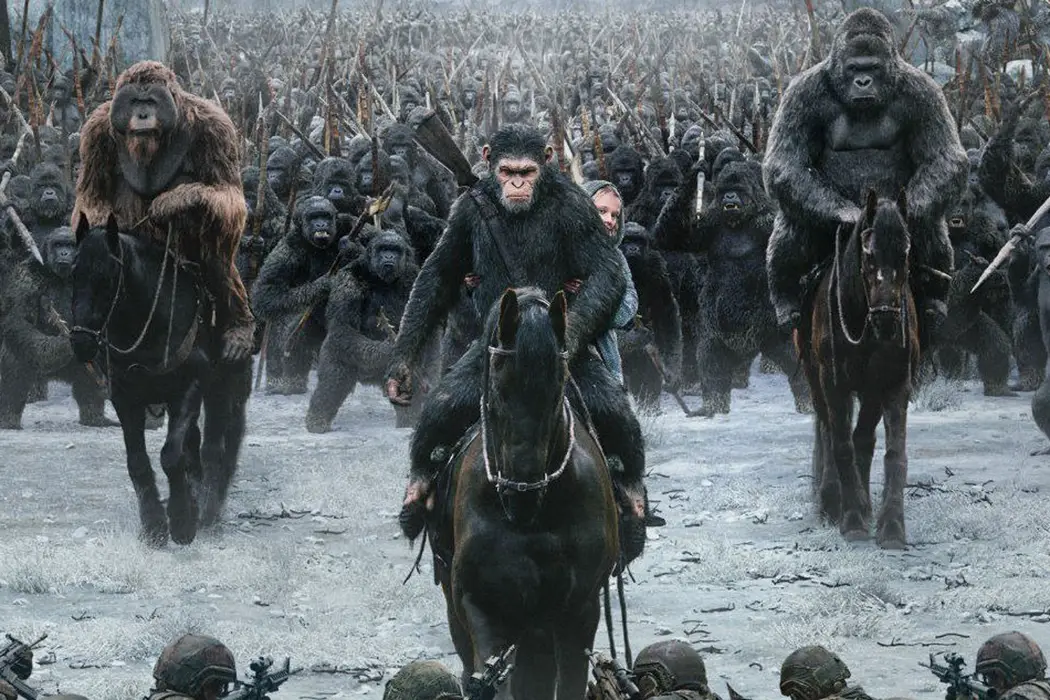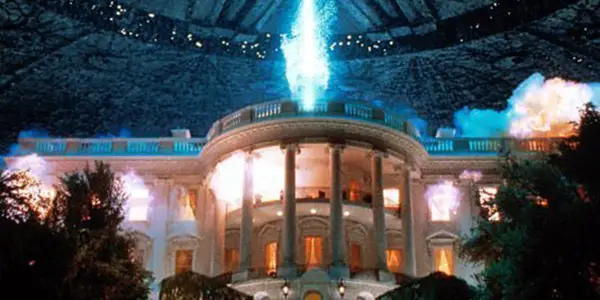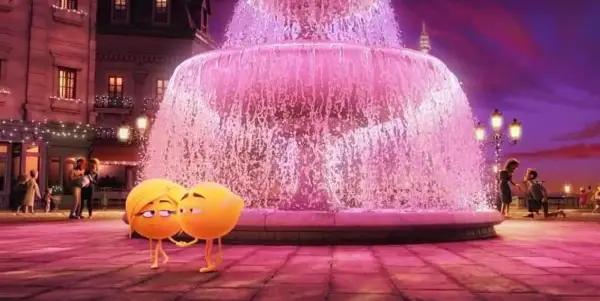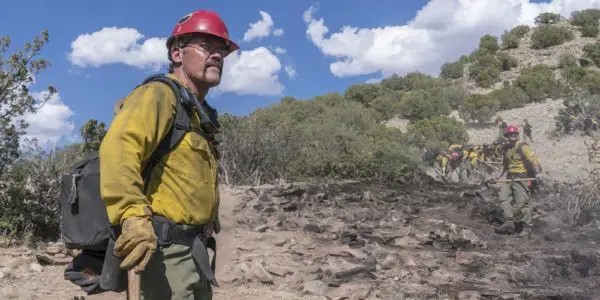We Need Better Trailers

Daniel Cohen is a film critic who reviews films. Obviously.…
The days of slapping a movie star on your poster like Tom Cruise, Arnold Schwarzenegger or Will Smith to sell your film are long gone. While it’s all about franchises, there’s still something to be said for great marketing. While Deadpool was a popular character among comic book fans, nobody expected an opening weekend over $132 Million. There’s no question Deadpool’s brilliant marketing campaign was a major factor in selling tickets.
It’s easy to say, “a great movie will sell itself.” Oh, yeah. Tell that to War for the Planet of the Apes and Blade Runner 2049, which vastly under-performed, but had critical ratings over 85% on Rotten Tomatoes. Word of mouth doesn’t always work.
A great trailer still means something.
Revisiting the Glory Days
Two of the greatest trailers ever made were Independence Day and Austin Powers: The Spy Who Shagged Me. Sure, the argument can be made that an alien disaster movie in the mid-nineties was going to sell itself, but over $800 Million Worldwide in 1996? Unfathomable. It’s because of that first trailer. They blew up the White House. That’s all you needed.

In the summer of 1999, everyone was obsessed with Star Wars: Episode I – The Phantom Menace. It dominated pop culture. Austin Powers played off this beautifully. They made it feel like an epic Star Wars teaser until Dr. Evil swiveled his chair. They even say in the trailer, “If you see one movie this summer, see Star Wars. But if you see two movies…” That’s genius. And even though this was a sequel to a cult hit, the first movie made just over $67 Million Worldwide. The second jumped to over $312 Million. That’s insane.
Creativity like this rarely exists in trailers today.
While certain franchises like the MCU and Star Wars can sell themselves, most movies don’t have that luxury. I’m sure there are many analysts and experts still pouring over 2017 box office data, but the answers may lie in those trailers.
The “It Will Sell Itself” Approach Doesn’t Always Work
War for the Planet of the Apes was coming off a sequel (Dawn of the Planet of the Apes) that blew people away. Fox thought they could sit back, throw apes on horses and pump out a whatever trailer.
Wrong.
Wow. That’s a bland trailer. Despite the ominous music, it’s just a bunch of generic army guys shooting in darkly lit areas with banal dialogue. Yeah, the ape effects still look good, but at this point, we’re over it.
Let’s juxtapose that with the teaser for Dawn of the Planet of the Apes:
It’s a standard start, but what gets butts in seats are those final seconds: A close up of Caesar’s eyes. Zoom out to his army. Caesar slams his hand down. Cut to title. Boom. Over $700 Million worldwide.
In an age where we can easily get oversaturated by franchises, some movies have to fight for relevance with every sequel. Look at Logan. Did they say, “Yeah, Hugh Jackman is Wolverine. Let’s just fart out a trailer.” No. The Johnny Cash teaser hooked everyone.
It’s Possible to Sell a Bad Film
Maybe there was no saving The Mummy, but a better trailer could have helped. This was supposed to start a whole Universal Monsters Shared Universe Whatever, but after one movie, that’s all in question now.
Look at the absolute mess that is this trailer:
It’s nothing but a bunch of explosions and random images strung together as the most cliché Rolling Stones song ever plays over it. This is textbook lazy marketing. While I never saw The Mummy, there had to have been a better way to sell this movie.
Let’s compare that to another bad film from 2017: The Emoji Movie. Remember how negative the reaction was when it opened? It was sitting at 0% on Rotten Tomatoes with the scuttlebutt of “Worst movie ever made” being thrown around.
Despite all that, it made over $216 Million Worldwide on a production budget of $50 Million. Considering the backlash, that’s not a bad day at the office. I believe it eked out a profit because of the goodwill the first teaser bought.
The Steven Wright “Meh” Emoji was one of the best trailers of 2017. It hooked me. I bought into the cleverness of the film. Rather than concocting a bunch of gobbledygook, it focused on a specific character.

Say what you want about the movie, but that was creative marketing. Instead of lame CGI, it focused on a specific moment. It was something to pull you in.
That’s what Austin Powers did.
Boring Trailers Are the Worst
Tom Cruise and director Doug Liman are no strangers to horrible trailers. Edge of Tomorrow is one of the most poorly marketed films of all time. That trailer was painful to sit through. Based on pure will and word of mouth, the film may now get a potential sequel.
In 2017, we saw another Doug Liman/Tom Cruise partnership get derailed by an atrocious trailer: American Made.
For lack of a better word, this trailer is boring:
You have no clue what the hell it is. There’s no pulse. It’s played over obnoxious music. It just sucks. The shame of it is, the movie is actually a blast. It’s incredible how little of that spirit is captured in this trailer.
Another yawn-inducing trailer was Only the Brave, the story about the Granite Mountain Hotshots. It has a Rotten Tomato score of 88%, and an audience rating of 93%.
What was the end result? Flop-a-rooney. It’s the most generic, run of the mill, paint by numbers trailer ever made.

You could have sold this movie. Express the ferocity of the fire. Focus on a specific moment. Tell a story. Do something!
Studio executives will argue that American Made and Only the Brave aren’t tied to franchises and were always going to be tough sells. That’s because you didn’t sell them.
How about Get Out? Is that movie tied to a franchise? No. But what did Universal do? They cut a damn good trailer. Yes, word of mouth helped, but it still had an opening weekend over $33 Million on a production budget of $4.5 Million. The trailer worked.
The trailer told a clear cut story. It’s something identifiable (guy going to meet his girlfriend’s parents with social commentary mixed in), but progresses into something bizarre and mysterious. You wanted to know more. That’s called a proper tease.
The trailers for Get Out were anything but boring, and the box office was rewarded.
Conclusion
Getting people to go to the movies is harder than ever. I understand movies in the eighties and nineties didn’t have Netflix, Amazon, Hulu, Xbox Plus Mocha Cappuccino Frapp Whatever to compete with, but I still believe a great trailer can infiltrate the brainwaves of a millennial.
While a handful of trailers from 2017 did their job, they were the exception, not the rule. If the box office is to improve in 2018, we need better trailers that are more than just boring, random CGI explosions.
The art of the tease still exists.
How do you feel about trailers today? Do they need a serious overhaul?
Does content like this matter to you?
Become a Member and support film journalism. Unlock access to all of Film Inquiry`s great articles. Join a community of like-minded readers who are passionate about cinema - get access to our private members Network, give back to independent filmmakers, and more.
Daniel Cohen is a film critic who reviews films. Obviously. He has a BA in English and studied Screenwriting at UCLA. His favorite movie is The Empire Strikes Back, but thinks Rocky is the greatest screenplay ever written. Out of all the movie characters in existence, he's probably most like Chas Tenenbaum. You can also find his writing at www.thepopbreak.com. Follow him on Twitter @dcohenwriter.













